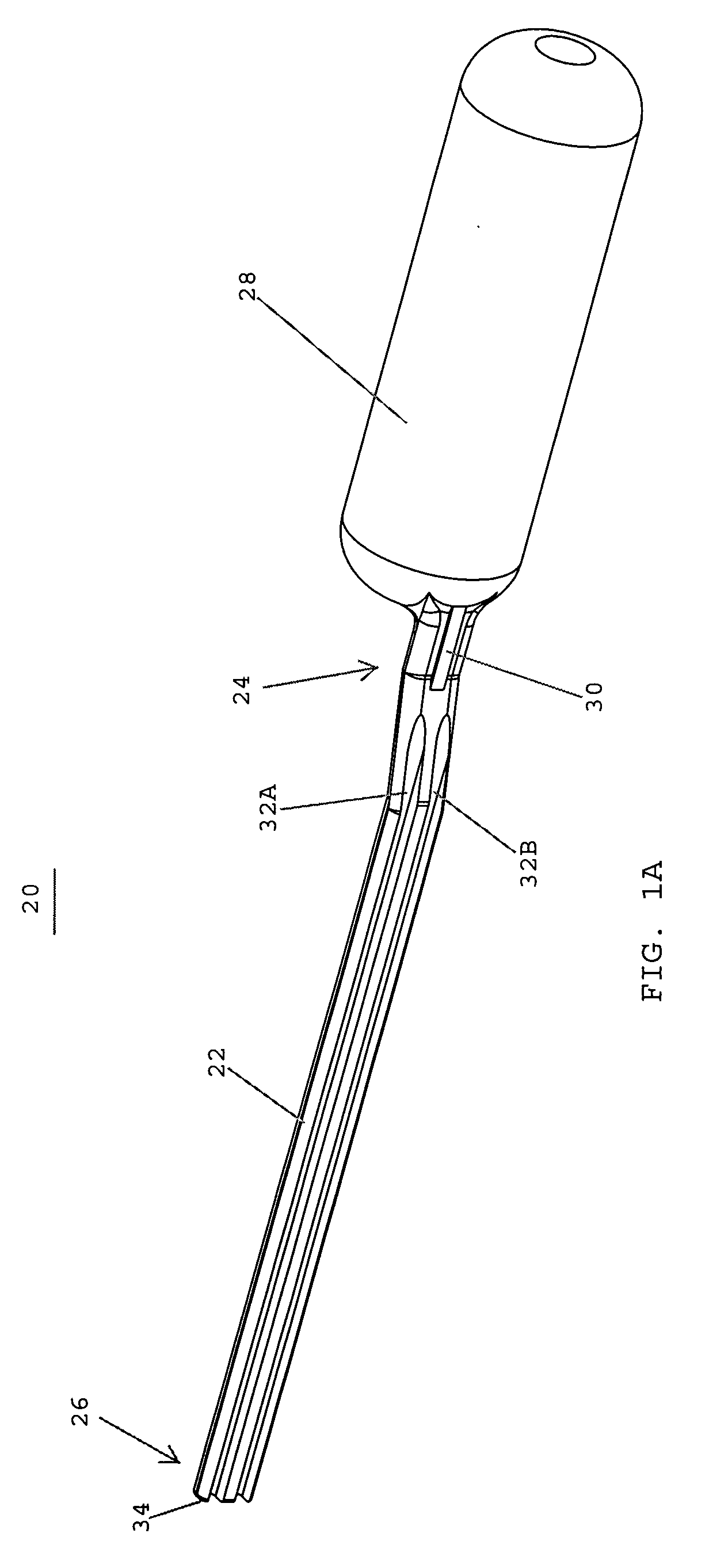Devices for tensioning barbed sutures and methods therefor
a barbed suture and tensioning technology, applied in the field of surgical sutures, can solve the problems of re-opening the wound, reducing blood flow, and slipping, and achieve the effect of efficient alignment of the barbed sutur
- Summary
- Abstract
- Description
- Claims
- Application Information
AI Technical Summary
Benefits of technology
Problems solved by technology
Method used
Image
Examples
Embodiment Construction
[0034]Referring to FIG. 1A, in one embodiment, a device 20 for tensioning barbed sutures includes a shaft 22 having a proximal end 24 and a distal end 26. The device 20 also includes a handle 28 that is connected with the proximal end 24 of the shaft 22. The device 20 includes a reinforcing rib 30 that reinforces the structural integrity of the shaft and the connection of the shaft 22 with the handle 28. The device also preferably includes first and second grooves 32A, 32B that extend between the proximal end 24 and the distal end 26 of the shaft 22. The grooves 32A, 32B are preferably adapted to receive barbed sutures. The grooves 32A, 32B preferably align the barbed sutures in the respective grooves. The distal end 26 of the shaft 22 includes a pressure applying surface 34. The pressure applying surface 34 is preferably located at a distal-most end of the shaft 22. After the sections of the barbed sutures have been passed through tissue or a prosthetic device, and positioned withi...
PUM
 Login to View More
Login to View More Abstract
Description
Claims
Application Information
 Login to View More
Login to View More - R&D
- Intellectual Property
- Life Sciences
- Materials
- Tech Scout
- Unparalleled Data Quality
- Higher Quality Content
- 60% Fewer Hallucinations
Browse by: Latest US Patents, China's latest patents, Technical Efficacy Thesaurus, Application Domain, Technology Topic, Popular Technical Reports.
© 2025 PatSnap. All rights reserved.Legal|Privacy policy|Modern Slavery Act Transparency Statement|Sitemap|About US| Contact US: help@patsnap.com



